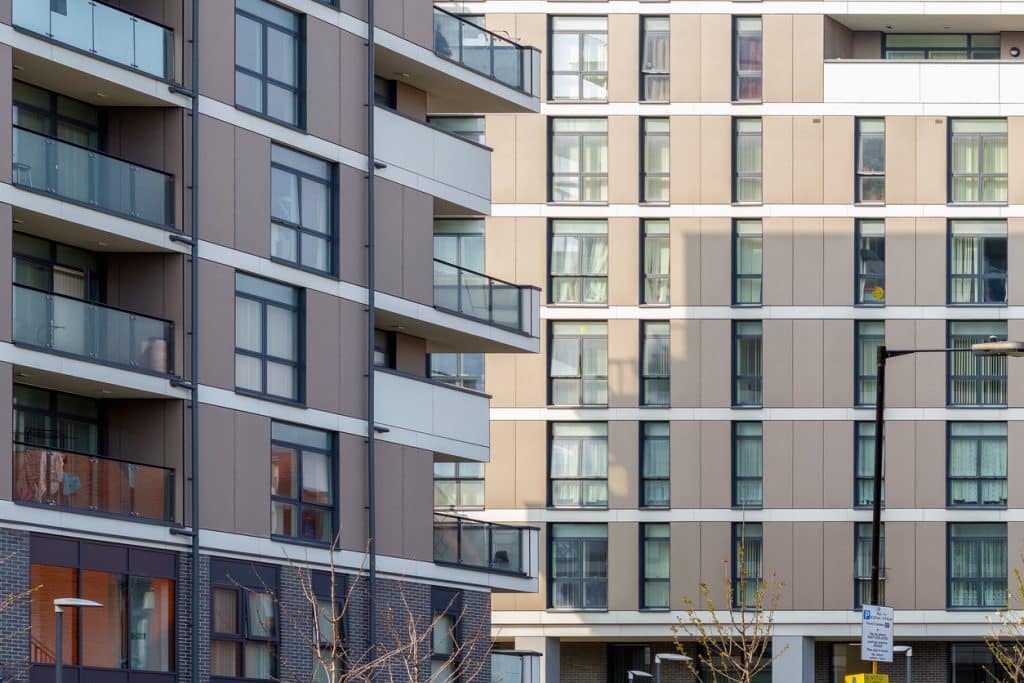We can never forget the terrible tragedy of the Grenfell Tower block fire which occurred on 14th June 2017 in North Kensington, West London, in which 72 people lost their lives, and hundreds more were left destitute. This horrific fire, which engulfed the whole building, began in a fourth-floor flat, due to a faulty fridge-freezer. It then soon quickly spread, making it the worst residential fire since World War Two. Grenfell Tower had recently undergone extensive restoration work, which involved installing cladding on the outside of the building. This cladding, however, was non-regulation, used because of its cheap cost, which then turned the whole incident into a national scandal and understandably generated a lot of anxiety and anger from people living in similar blocks of flats.

The Purpose Of Cladding
Having cladding fitted to the outside of buildings serves several purposes – as insulation, providing protection from the elements, and to improve the appearance of the building. The problem was that after the Grenfell Tower fire, thousands of blocks of flats all across the country were found to have similar dangerous cladding, which is highly flammable, and should never be used. Not only that, but by law, it is the poor leaseholders who are responsible for paying to have the cladding removed, and not the freeholders who actually own the land that the building occupies. It is a very expensive undertaking, costing thousands of pounds, to have this cladding taken down. This therefore results in the homeowners being in negative equity, and unable to sell their property, with it being valued at zero.
Safety Assessment
After the fire, lenders started insisting that safety assessors sign off an EWS1 form, in order to prove that buildings are safe, before they will lend any money. The problem has been that they were not only requesting this form for high-rise blocks, but for many other different types of building too, even ones without any cladding whatsoever! This then created massive problems in this area of the housing market, causing it to stall. Flat owners were lumbered with huge bills for work that was not even necessary, due to the extreme risk aversion of lenders, insurers and the whole property industry.
High Rise Buildings
This was not always the case following the tragedy. At first, only flat owners in high-rise buildings which were known to have the dangerous cladding were affected. But then in January 2020, safety check advice was extended by the government to include smaller buildings, and chaos ensued.
However, last month, housing secretary Robert Jenrick made an announcement that there would be new, updated guidelines for lenders in England. This update was issued following advice that the government had received from fire safety experts earlier in the year. The upshot is that safety checks would now no longer be required to take place for buildings that were less than 18 meters (59 feet) tall, providing that there are not already known safety issues with the building that will still need to be assessed.
New Government Guidelines
The good news is that, overall, the number of residential fires that occur are falling year on year, and approximately 90% of those happen in houses, bungalows and flat conversions. However, the unfortunate reality is that, when tower block fires do happen, they are obviously far more likely to be devastating in terms of loss of life – and when you have the addition of flammable cladding, the potential tragedy is magnified many times. We can only hope that the industry has learnt from the Grenfell Tower fire, to make sure that it is never repeated, while at the same time not overdoing the recommendations and applying them to buildings which are obviously safe, which results in financial ruin and hardship for thousands of homeowners all over the country. But hopefully now with these new guidelines from the government, owners of flats in medium sized blocks can sleep a bit easier.
